War Read online
ALSO BY SEBASTIAN JUNGER
A DEATH IN BELMONT
FIRE
THE PERFECT STORM
Copyright
Copyright © 2010 by Sebastian Junger
All rights reserved. Except as permitted under the U.S. Copyright Act of 1976, no part of this publication may be reproduced, distributed, or transmitted in any form or by any means, or stored in a database or retrieval system, without the prior written permission of the publisher.
Twelve
Hachette Book Group
237 Park Avenue
New York, NY 10017
Visit our website at www.HachetteBookGroup.com
www.twitter.com/grandcentralpub
Twelve is an imprint of Grand Central Publishing.
The Twelve name and logo are trademarks of Hachette Book Group, Inc.
First eBook Edition: May 2010
ISBN: 978-0-446-56976-7
To my wife, Daniela
Contents
Also by Sebastian Junger
Copyright
Author’s Note
Book One: Fear
New York City
1: Korengal Valley, Afghanistan
Chapter 2
Chapter 3
Chapter 4
Chapter 5
Chapter 6
Book Two: Killing
Chapter 1
Chapter 2
Chapter 3
Chapter 4
Chapter 5
Chapter 6
Chapter 7
Chapter 8
Book Three: Love
Chapter 1
Chapter 2
Chapter 3
Chapter 4
Chapter 5
Chapter 6
Vicenza, Italy
Selected Sources and References
Acknowledgments
About the Author
A Preview of RESTREPO
About Twelve
AUTHOR’S NOTE
THIS BOOK WAS THE RESULT OF FIVE TRIPS TO THE Korengal Valley in eastern Afghanistan that I took between June 2007 and June 2008 for Vanity Fair magazine. I was an “embedded” reporter and entirely dependent on the U.S. military for food, shelter, security, and transportation. That said, I was never asked — directly or indirectly — to alter my reporting in any way or to show the contents of my notebooks or my cameras. I worked with a photojournalist named Tim Hetherington, who also made five trips to the Korengal, sometimes with me and sometimes on his own. Our longest trips lasted a month. Tim and I shot roughly 150 hours of videotape, and that material was aired in brief form on ABC News and then became the basis of a feature-length documentary, produced and directed by Tim and me, called Restrepo.
Many scenes in this book were captured on videotape, and wherever possible I have used that tape to check the accuracy of my reporting. Dialogue or statements that appear in double quotations marks (“. . .”) were recorded directly on camera or in my notebook while the person was speaking, or soon thereafter. Dialogue recalled by someone later is indicated by single quotation marks (‘. . .’). Some scenes that I was not present for were entirely reconstructed from interviews and videotape. Many scenes in this book are personal in nature, and I have shared those sections with the men involved to make sure they are comfortable with what I wrote. I hired an independent fact-checker to help me combat the inevitable errors of journalism, and a bibliography of sources that were consulted appears at the back of the book. In many cases I have shortened quotes from interviews and texts in order to ease the burden on the reader.
BOOK ONE
FEAR
By cowardice I do not mean fear. Cowardice… is a label we reserve for something a man does. What passes through his mind is his own affair.
— Lord Moran, The Anatomy of Courage
NEW YORK CITY
Six Months Later
O’Byrne is standing at the corner of Ninth Avenue and 36th Street with a to-go cup in each hand and the hood of his sweatshirt pulled up. It’s six in the morning and very cold. He’s put on twenty pounds since I last saw him and could be a laborer waiting for the gate to open at the construction site across the street. Now that he’s out of the Army I’m supposed to call him Brendan, but I’m finding that almost impossible to do. We shake hands and he gives me one of the coffees and we go to get my car. The gash across his forehead is mostly healed, though I can still see where the stitches were. One of his front teeth is chipped and looks like a fang. He had a rough time when he got back to Italy; in some ways he was in more danger there than in combat.
O’Byrne had been with Battle Company in the Korengal Valley, a small but extraordinarily violent slit in the foothills of the Hindu Kush mountains of eastern Afghanistan. He was just one soldier out of thirty but seemed to have a knack for putting words to the things that no one else really wanted to talk about. I came to think of O’Byrne as a stand-in for the entire platoon, a way to understand a group of men who I don’t think entirely understood themselves. One valley to the north, two platoons from Chosen Company accumulated a casualty rate of around 80 percent during their deployment. Battle Company wasn’t hit that hard, but they were hit hard enough. This morning I’m going to interview Justin Kalenits, one of the wounded from Chosen, and O’Byrne has asked if he could join me. It’s a cold, sunny day with little traffic and a north wind that rocks the car along the open stretches and on the bridges. We barrel southward through the industrial dross of New Jersey and Pennsylvania talking about the deployment and the platoon and how strange it is — in some ways for both of us — to find ourselves in the United States for good. I spent the year visiting O’Byrne’s platoon in the Korengal, but now that’s over and neither of us will ever see it again. We’re both dreaming about it at night, though, weird, illogical combat sequences that don’t always end badly but are soaked in dread.
Kalenits was shot in the pelvis during what has come to be known as the Bella Ambush. Bella was one of the firebases operated by Chosen Company in the Waygal Valley. In early November, fourteen Chosen soldiers, twelve Afghan soldiers, a Marine, and an Afghan interpreter walked to the nearby village of Aranas, met with elders, and then started to walk back. It was a setup. The enemy had built sandbagged positions in a 360-degree circle around a portion of the trail where there was no cover and the only escape was to jump off a cliff. By some miracle, Chosen held them off. Six Americans and eight Afghans were killed and everyone else was wounded. An American patrol hasn’t taken 100 percent casualties in a firefight since Vietnam.
We turn into Walter Reed Army Medical Center and park in front of Abrams Hall, where Kalenits lives. We find him in his room smoking and watching television in the dark. His blinds are down and cigarette smoke swirls in the slats of light that come through. I ask Kalenits when was the first moment he realized he was in an ambush, and he says it was when the helmet was shot off his head. Almost immediately he was hit three times in the chest, twice in the back, and then watched his best friend take a round through the forehead that emptied out the back of his head. Kalenits says that when he saw that he just “went into awe.”
There were so many muzzle flashes around them that the hills looked like they were strung with Christmas lights. The rounds that hit Kalenits were stopped by ballistic plates in his vest, but one finally hit him in the left buttock. It shattered his pelvis and tore up his intestines and exited through his thigh. Kalenits was sure it had severed an artery, and he gave himself three minutes to live. He spotted an enemy machine-gun team moving into position on a nearby hill and shot at them. He saw the men fall. He went through all of his ammunition except for one magazine that he saved for when the enemy came through on foot to finish everyone off.
Kalenits started to fade out from lack of blood and he handed his weapon to another
man and sat down. He watched a friend named Albert get shot in the knee, and start sliding down the cliff. Kalenits’s team leader grabbed him and tried to pull him back, but they were taking so much fire that it was going to get them both killed. Albert yelled to his team leader to let go and he did, and Albert slid partway down the cliff, losing his weapon and helmet on the way. He finally came to a stop and then got shot three more times where he lay.
Rocket-propelled grenades were exploding all around them and throwing up so much dust that the weapons were jamming. Men were spitting into the breeches of their guns, trying to clear them. For the next hour Kalenits faded in and out of consciousness and the firefight continued as one endless, deafening blur. It finally got dark and the MEDEVAC bird arrived and started hoisting up the wounded and the dead. There was a dead man in a tree below the trail and dead men at the bottom of the cliff. One body fell out of the Skedco harness as it was being hoisted into the helicopter, and a quick-reaction force that had flown in from Battle Company had to search for him most of the night.
The last thing Kalenits remembered was getting stuck with needles by doctors at the base in Asadabad; the next thing he knew, he was in Germany. His mother had come home to a message telling her to get in contact with the military immediately, and when she did she was told that she’d better fly to Germany as fast as possible if she wanted to see her son alive. He was still alive when she arrived, and he eventually recovered enough to return to the United States.
O’Byrne has been quiet most of the interview. “Did anyone bring up the issue of walking at night?” he finally says. “On the way out, did anyone bring that up?”
I know why he’s asking: Second Platoon left a hilltop position during the daytime once and got badly ambushed outside a town called Aliabad. A rifleman named Steiner took a round in the helmet, though he survived.
“No — the lieutenant said, ‘We’re leaving now,’” Kalenits answers. “What are you going to say to him?”
“Fuck off?” O’Byrne offers.
Kalenits smiles, but it’s not a thought anyone wants to pursue.
1
KORENGAL VALLEY, AFGHANISTAN
Spring 2007
O’BYRNE AND THE MEN OF BATTLE COMPANY ARRIVED in the last week in May when the rivers were running full and the upper peaks still held their snow. Chinooks escorted by Apache helicopters rounded a massive dark mountain called the Abas Ghar and pounded into the valley and put down amid clouds of dust at the tiny landing zone. The men grabbed their gear, filed off the birds, and got mortared almost immediately. The enemy knew a new unit was coming into the valley and it was their way of saying hello; fourteen months later they’d say goodbye that way as well. The men took cover in the mechanics’ bay and then shouldered their gear and climbed the hill up to their tents at the top of the base. The climb was only a hundred yards but it smoked almost everyone. Around them, the mountains flew up in every direction. The men knew that before the year was out they would probably have to walk on everything they could see.
The base was called the Korengal Outpost — the KOP — and was considered one of the most dangerous postings in Afghanistan. It was a cheerless collection of bunkers and C-wire and bee huts that stretched several hundred yards up a steep hillside toward a band of holly trees that had been shredded by gunfire. There was a plywood headquarters building and a few brick-and-mortars for the men to sleep in and small sandbag bunkers for mortar attacks. The men ate one hot meal a day under a green Army tent and showered once a week in water that had been pumped out of a local creek. Here and there PVC pipe was stuck into the ground at an angle for the men to urinate into. Since there were no women there was no need for privacy. Past the medical tent and the water tank were four open brick stalls that faced the spectacular mountains to the north. Those were known as the burn-shitters, and beneath each one was a metal drum that Afghan workers pulled out once a day so they could burn the contents with diesel fuel. Upslope from there was an Afghan National Army bunker and then a trail that climbed up to Outpost 1, a thousand feet above the KOP. The climb was so steep that the previous unit had installed fixed ropes on the bad parts. The Americans could make the climb in forty-five minutes, combat-light, and the Afghans could make it in half that.
Several days after they arrived, O’Byrne’s platoon went on patrol with men from the 10th Mountain Division, whom they were replacing in the valley. Tenth Mountain had begun their rotation back to the United States several months earlier, but Army commanders had changed their minds and decided to extend their tour. Men who had arrived home after a year of combat were put on planes and flown back into the war. Morale plunged, and Battle Company arrived to stories of their predecessors jumping off rocks to break their legs or simply refusing to leave the wire. The stories weren’t entirely true, but the Korengal Valley was starting to acquire a reputation as a place that could alter your mind in terrible and irreversible ways.
However messed up 10th Mountain might have been, they’d been climbing around the valley for over a year and were definitely in shape. On the first joint patrol they led Second Platoon down toward the Korengal River and then back up to a granite formation called Table Rock. Tenth Mountain was intentionally trying to break them off — make the new men collapse from exhaustion — and halfway up Table Rock it started to work. A 240 gunner named Vandenberge started falling out and O’Byrne, who was on the same gun team, traded weapons with him and hung the 240 across his shoulders. The 240 is a belt-fed machine gun that weighs almost thirty pounds; you might as well be carrying a jackhammer up a mountain. O’Byrne and the rest of the men had another fifty pounds of gear and ammunition on their backs and twenty pounds of body armor. Almost no one in the platoon was carrying less than eighty pounds.
The men struggled upward in full view of the Taliban positions across the valley and finally began taking fire halfway up the spur. O’Byrne had never been under fire before, and the first thing he did was stand up to look around. Someone yelled to take cover. There was only one rock to hide behind, and Vandenberge was using it, so O’Byrne got behind him. ‘Fuck, I can’t believe they just shot at me!’ he yelled.
Vandenberge was a huge blond man who spoke slowly and was very, very smart. ‘Well,’ he said, ‘I don’t know if they were shooting at you…’
‘Okay,’ O’Byrne said, ‘shooting at us…’
Inexperienced soldiers are known as “cherries,” and standing up in a firefight is about as cherry as it gets. So is this: the first night at the KOP, O’Byrne heard a strange yammering in the forest and assumed the base was about to get attacked. He grabbed his gun and waited. Nothing happened. Later he found out it was just monkeys that came down to the wire to shriek at the Americans. It was as if every living thing in the valley, even the wildlife, wanted them gone.
O’Byrne grew up in rural Pennsylvania on a property that had a stream running through it and hundreds of acres of woods out back where he and his friends could play war. Once they dug a bunker, another time they rigged a zip line up between trees. Most of those friends wound up joining the Army. When O’Byrne turned fourteen he and his father started fighting a lot, and O’Byrne immediately got into trouble at school. His grades plummeted and he began drinking and smoking pot and getting arrested. His father was a plumber who always kept the family well provided for, but there was tremendous turmoil at home — a lot of drinking, a lot of physical combat — and one night things got out of hand and O’Byrne’s father shot him twice with a .22 rifle. From his hospital bed, O’Byrne told the police that his father had shot him in self-defense; that way he went to reform school for assault rather than his father going to prison for attempted murder. O’Byrne was sixteen.
A shop teacher named George started counseling him, and O’Byrne spent hours at George’s wood shop carving things out of wood and talking. George got him turned around. O’Byrne started playing soccer. He got interested in Buddhism. He started getting good grades. After eight months he moved in with his grandpar
ents and went back to high school. “I changed my whole entire life,” O’Byrne told me. “I apologized to all the teachers I ever dissed. I apologized to kids I used to beat up. I apologized to everyone and I made a fucking vow that I was never going to be like that again. People didn’t even recognize me when I got home.”
One afternoon, O’Byrne saw a National Guard recruiter at his high school and signed up. The unit was about to deploy to Iraq and O’Byrne realized he would be spending a year with a bunch of middle-aged men, so he managed to transfer into the regular Army. The Army wanted to make him a 67 Hotel — a tank mechanic — but he protested and wound up being classified as 11 Charlie. That’s mortars. He didn’t want to be a mortarman, though — he wanted to be 11 Bravo. He wanted to be an infantryman. His drill sergeant finally relented after O’Byrne got into a barracks fight with someone the sergeant didn’t like and broke the man’s jaw. The sergeant was Latino and spoke English with such a strong accent that often his men had no idea what he was saying. One afternoon when they were filling out information packets, the sergeant started giving instructions that no one could understand.
“He’d be like, ‘Take your motherfucker packet and put it in your motherfucker packet,’” O’Byrne said. “And we’re all like, ‘What the fuck is he talking about? What’s a “motherfucker packet”? And then he starts pointing to things he’s talking about: ‘Take your motherfucker packet’ — which is a packet — ’and put it in your motherfucker packet!’ — and he points to his pocket. Oh, okay! You put your packet in your pocket!”
O’Byrne wanted to go to Special Forces, and that meant passing a series of lower-level schools and selection courses. Airborne School was a joke; he passed SOPC 1 (Special Operations Preparation Course) with flying colors; got himself selected for Special Forces; tore through SOPC 2; and then was told he couldn’t advance any further without combat experience. ‘You can’t replace combat with training,’ a black E7 at Fort Bragg told him. ‘You can’t do it. You can’t replace that fucking experience. Get deployed, and if you want to come back, come back after that.’

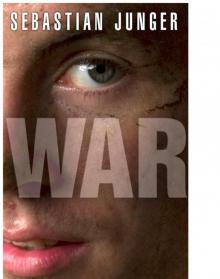 War
War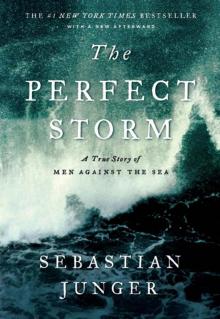 The Perfect Storm: A True Story of Men Against the Sea
The Perfect Storm: A True Story of Men Against the Sea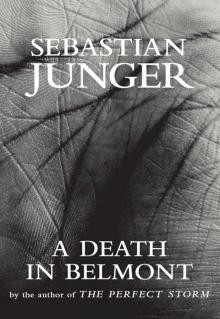 A Death in Belmont
A Death in Belmont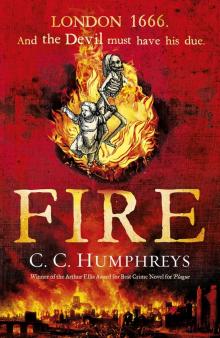 Fire
Fire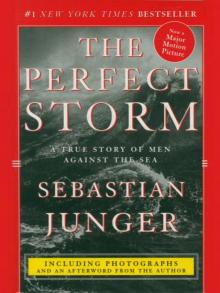 The Perfect Storm
The Perfect Storm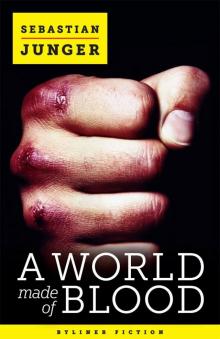 A World Made of Blood (Kindle Single)
A World Made of Blood (Kindle Single)